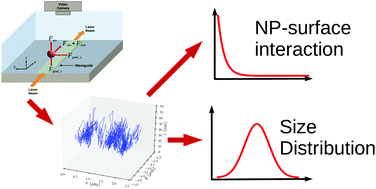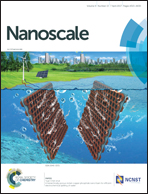Using single nanoparticle tracking obtained by nanophotonic force microscopy to simultaneously characterize nanoparticle size distribution and nanoparticle–surface interactions†
Abstract
Comprehensive characterization of nanomaterials for medical applications is a challenging and complex task due to the multitude of parameters which need to be taken into consideration in a broad range of conditions. Routine methods such as dynamic light scattering or nanoparticle tracking analysis provide some insight into the physicochemical properties of particle dispersions. For nanomedicine applications the information they supply can be of limited use. For this reason, there is a need for new methodologies and instruments that can provide additional data on nanoparticle properties such as their interactions with surfaces. Nanophotonic force microscopy has been shown as a viable method for measuring the force between surfaces and individual particles in the nano-size range. Here we outline a further application of this technique to measure the size of single particles and based on these measurement build the distribution of a sample. We demonstrate its efficacy by comparing the size distribution obtained with nanophotonic force microscopy to established instruments, such as dynamic light scattering and differential centrifugal sedimentation. Our results were in good agreement to those observed with all other instruments. Furthermore, we demonstrate that the methodology developed in this work can be used to study complex particle mixtures and the surface alteration of materials. For all cases studied, we were able to obtain both the size and the interaction potential of the particles with a surface in a single measurement.



 Please wait while we load your content...
Please wait while we load your content...